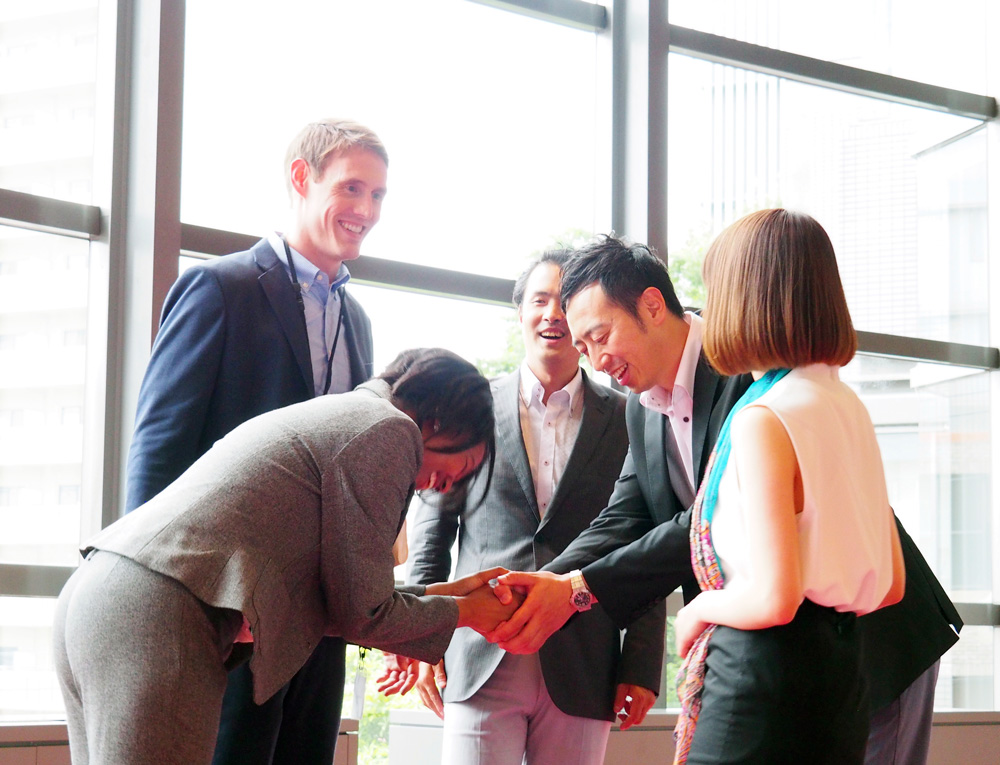 Doing business in Shanghai? Singapore? Hong Kong?
Doing business in Shanghai? Singapore? Hong Kong?
Custom-tailor your approach just like a Hong Kong tailor does for a silk suit or dress. They understand how to fit their clothing for a particular person, and you need to do the same for each unique situation.
Avoid imposing personal customs, habits, and business etiquette from your passport country into international business meetings and deals. By doing a little research and preparation, you’ll fit in more easily and find your business dealings go more smoothly.
Consider these 12 tips to prepare for business meetings abroad:
1. Time
Plan to arrive early and stay late. Understand that ‘time-conscious’ Western economies think of time as a limited and cost-related commodity. Western businesses also tend to be more short-term focused than those in the East, for whom quarterly earnings are less a measure of success.
Remember, these are cultures whose history is measured in millennia rather than centuries! Allow plenty of time for discussion, dinner and drinks.
2. Plan a power conversation
Include the higher purpose in the early discussions. Discuss the 30,000 foot view, like the industry’s current and future developments, not just the business at hand.
3. Small talk starts the meeting
Be prepared to begin with small talk about your business counterpart’s country, as well as their customs, history and current popular sports figures. Consider incorporating activities that will be popular and positive experiences for everyone, such as visits to their world heritage sites.
4. Formality shows self-control and self-respect
Body language is as important as the words you speak in Asia – sometimes more so. Remain calm and formal to demonstrate self-control and that you’re worthy of their respect. It is considered improper etiquette to place hands or fingers on yours or anyone else’s head, face or mouth.
5. Prepare a Memorandum of Understanding
Have an MOU prepared in advance so that when both parties agree to move forward, you are ready to start the process. More detailed agreements, including licensing, can be drafted later.
6. The importance of saving face
Saving face, the notion of ensuring behavior does not provoke strong negative emotions in another person or yourself, is critically important and deeply valued in society and business. Ideas should be discussed gently to avoid “throwing anyone under the bus” or anyone losing face, you included.
7. Gift exchange
Coordinate the gift exchange before departure, confirming details with your inside contact.
Small, locally made artisan crafts and gifts from your home region are typically well received. Inexpensive, pre-packaged, non-perishable food-items such as local sweets, regional peppers, maple syrup, and chocolates are also good ideas.
Consider books, bookmarks, golf balls and scarves that may not be available in the destination country. Avoid red ink in books and papers. Be sure to bring extra gifts in case you are introduced to someone you weren’t expecting to meet.
8. Time for silence
Brief your team beforehand about having specific time set aside after the meeting for silence and questions. In Asia, it is impolite to ask questions during a presentation. This is viewed as ‘interrupting’ the speaker. The same dynamic occurs during meetings.
9. Avoid product promotions
Before describing your services or products, be prepared to discuss other, general topics. Wait to be asked for your materials, rather than hand them out.
10. Patience
Constant distractions in many Asian workplaces, including cell phones ringing frequently and animated conversations elsewhere in the building, may cause you to feel distracted.
Remember that other cultures have different ways of working. In Asia, businesspeople are very comfortable with constant interruptions and dispensing with agendas in service of important relationships.
11. Humor caveat
Humor is culture-specific, so something that is funny for someone in one culture may draw blank stares or serious looks from those in another culture. Subtle meaning from North American or European humor can get lost in translation in many Asian cultures, and vice-versa.
If you do tell a joke, know that the interpreter may simply tell those present to laugh because the visitor just told a joke that they can’t understand. Which, in itself is kind of funny, right?
12. Gestures
Avoid expansive, sweeping hand movements. Research offensive country-specific gestures to make sure you don’t unintentionally insult anyone. Most Asian cultures don’t gesture with their hands or point with their index finger. Use an open palm facing upward to indicate direction.
Knowing proper international business meeting etiquette goes a long way in opening up new ventures in Asia and beyond. Creating a welcoming atmosphere that is respectful of different cultures and business practices, rather than trying to force Western ideas on others, will go a long way to inspire trust, establish rapport and build long-term relationships.







disqus comments